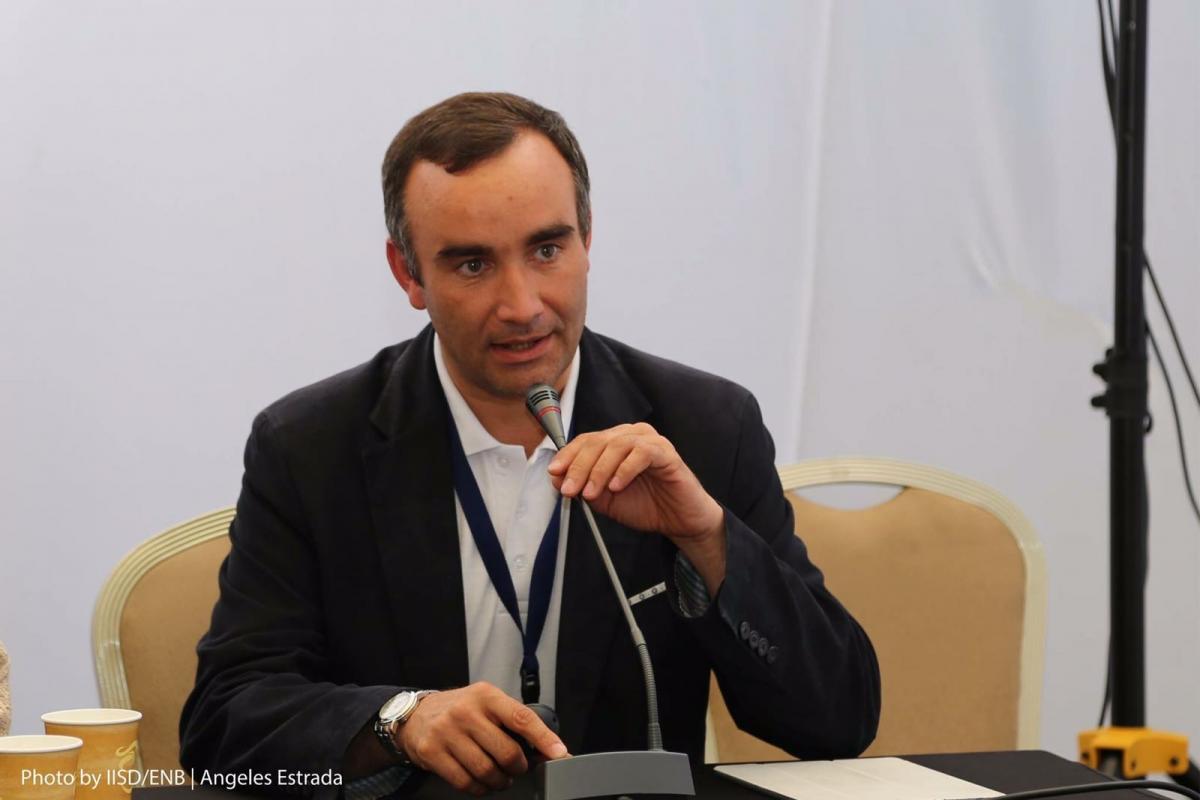A cooperative network to progress towards high quality standards: an interview with protected areas expert Thierry Lefebvre
This is the fourth in a series of interviews with Natura 2000 experts as part of the LIFE Green List for N2K project. In this interview, Thierry Lefebvre, the programme officer on protected areas of the IUCN French Committee, shares his optimism and hope towards the benefits of the pilot project currently ongoing.

Photo: IISD/ENB Angeles Estrada
Thierry’s education as an agricultural engineer did not naturally lead him to get involved with protected areas. “My interest in this protection system is the result of a personal and professional evolution, which began with a critical analysis of the agricultural productionist model and then through scientific research in social anthropology.”
Thierry considers that this interdisciplinary approach between natural and social sciences was necessary to address the complexity of the challenges faced by biodiversity conservation; in a nutshell “protecting nature means above all managing social relationships”. It was in 2003 that he began to work on protected areas as part of his doctoral thesis in anthropology. For nearly five years, he studied the conflicts of representations and uses of nature between managers and local communities in different Peruvian protected areas. After studying ecological engineering, Thierry started working at IUCN France in 2010 as a programme officer on protected areas, where he is still currently working.
As European protected areas are part of a highly anthropised territorial context and most often rural, his comprehensive understanding brought Thierry to believe that “the reconciliation of biodiversity conservation objectives with human activities is a permanent challenge for their management, governance and, above all, their integration with sectoral policies, particularly agricultural policies”. Furthermore, he sees another major challenge in the complexity of the protected areas system in Europe, due to the variety of often overlapping protection status and natural and semi-natural habitats involved. Hence, this results in a myriad of small sites, generally requiring active management (IUCN category IV) and therefore significant resources. In this context, it is a paradox for our expert that few countries have developed systems to assess both management effectiveness and analyses of diversity, adding the fact that quality of governance remains uncommon.
As part of his activities as a protected areas programme officer at IUCN France, Thierry regularly works on Natura 2000 sites by assigning IUCN categories and evaluating their contribution to the implementation of Aichi Target 11. He is also involved in the pilot Green List project applied to Natura 2000 sites which raised a strong interest in France, since nearly a quarter of the candidate sites that responded to the call for proposals came from France.
Thierry first came across the Green List in 2012 during discussions with the staff of IUCN’s global protected areas programme. He remembers that at that time, the green list existed only in concept notes and its promotors were questioning its technical feasibility. Although it was clear that this global initiative was not yet mature enough to mobilize protected area managers, the idea of a voluntary standard to assess the quality of protected area management and governance was a real challenge. Our expert took therefore the initiative in 2013 to create an expert assessment group (EAGL) in France, in order to promote and test this new tool on pilot sites. Simultaneously, Thierry participated in a series of international workshops (South Korea, Kenya, and Australia) that contributed to define the first standards and procedures. This exciting and collective experience inspired him to embark in a new adventure with the creation of a Green List of Protected and Conserved Area (GLPCA) Francophone network to share best practices.
When thinking about the benefits of the GLPCA that are particularly relevant for the Natura 2000 sites, Thierry shares a three-step answer. First, “it is the only global label that recognizes and values the efforts and results of protected areas management”, he says. Hence, it increases the lacking international visibility of this network of protected areas. Secondly, based on a common methodological framework, the Green List “measures and compares the quality of site management and governance, regardless of the countries and the ways in which European Directives are implemented”. And last but not least, he identifies in this process “a continuous improvement system that allows candidates to progress towards high quality standards”. In addition, Thierry foresees that the support provided by IUCN’s experts and by the cooperation of other sites managers will quickly become “the main added value of this new initiative”. Accordingly, he expects that in the near future, the entire network will benefit from a system of experience sharing among managers from different countries, of companionship and of twinning between Natura 2000 sites.

One Natura 2000 site that has a particular meaning for Thierry is the so called “Cuesta du Bray”, located near the village of his childhood in Northern France. He depicts it as consisting “of a chalky, steep and elongated coast, which dominates a fertile plain cultivated since Roman times”. This “small mountain”, in the middle of a mosaic of fields, is the remnant of an anticline formed 12 million years ago, which reached 500 metres before eroding almost completely. In this site, there are original forests of lime, elms and ash trees, as well as dry grasslands formerly used for pastoralism, with orchids native from the Northern Mediterranean.
There are 11 French sites and 1 transboundary sites with Italy participating in the testing phase of the Green List for Natura 2000 project.
More information about the 'Green List for Natura 2000' project can be found here. If you’re interested in learning more about the project you can also contact catarina.ferreira@iucn.org



